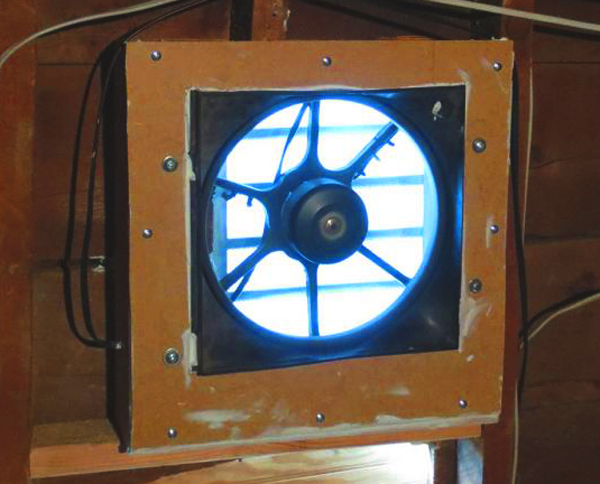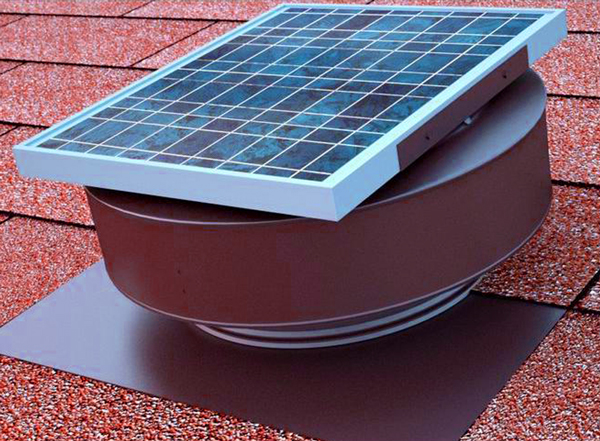-
Get Started Now!
Quality QuietCool Attic Fans can help keep your family cool and save money too!
What is an Attic Fan?
A whole house fan is a fan that exhausts air from the home, into the attic, and out the attic vents. An attic fan, on the other hand, is a fan that exhausts only attic air out of the attic vents. There are many types of attic fans such as; attic gable fans, roof mount attic fans, and solar attic fans.
With energy costs higher than ever, many homeowners are looking for ways to reduce their bills while still keeping the whole house cool. Choosing a more energy-efficient air conditioner is one solution but for many homes, an even better solution is an attic exhaust fan.
Whole house fans and attic fans are often misconceived as the same type of fan and while they may share some similarities, they have entirely different purposes. This is a very common misconception. Back in the 1970s, people would call the old-fashioned “helicopter” whole house fans, an attic fan. This caught on and is still very common on the East Coast of the United States.
-
The EPA states that the relative humidity in the home and attic “should be kept below 60 percent — ideally between 30 percent and 50 percent, if possible.”
Benefits of an Attic Fan
Attic ventilation is crucial to homeowners because attics can be like an oven on top of your home, just heating your living space from above. When mid-summer comes around, attics can reach temperatures of over 160 degrees Fahrenheit! In a two-story home, this heat can make the top floor unbearable! Installing an attic fan helps to lower those outrageous temperatures in the attic, thus helping the home stay cooler. For this reason, an attic fan alone can help homeowners feel more comfortable.
If living more comfortably is not enough to attract you to an attic fan, perhaps saving money on your electric bill while preserving your most expensive home appliance will. All homeowners dread running their HVAC(Heating, Ventilation, and Air Conditioning) system also known as the air conditioner. Families often fight over the thermostat, weighing the pros & cons before reluctantly turning their HVAC system on, knowing their electric bill is steadily rising.
An attic fan’s ability to cool a portion of the house that the A/C can’t equate to a home that is cooler usual. When that is the case, a homeowner is much less likely to use their A/C as their home is not reheating like it normally does. The A/C then gets far less work than it usually does which could save money on upsetting repairs further down the road.
Other A/C related anguish includes homeowners being frustrated by the apparent delay period for their HVAC system. For the first few minutes, homeowners can hear their HVAC system running but the home does not feel any cooler. The reason for this is the ductwork for the air conditioner is surrounded by extreme attic temperatures. These temperatures obviously heat up the ductwork so when the system is first turned on, it begins at a deficit. The ductwork must first cool down before homeowners feel any noticeable difference in the living space. This is where the attic fan comes in! As we said before, attic fans greatly reduce the temperature in the attic which means your ductwork will also stay cool! This translates to your HVAC system reaching the set temperature much quicker, allowing it to run more efficiently, thus creating a more comfortable living environment, all while extending the life of your most expensive home appliance!
Why Use a Gable Fan?
Rather than bringing in fresh air from the inside of the home like a whole house fan, for instance, a gable attic fan is a specific type of fan designed to remove the hot, stale air from the attic of a home. You will feel the benefit of this fan mostly on your cooling bill. Since gable attic fans remove the hottest air in the home, your air conditioner will be more efficient and you may be able to run it less while still effectively cooling your home.
Using Attic Fans in Cold Climates
Attic fans are very popular in the Midwest and East Coast because they also help prevent ice damming in attics during the cold winter months. A typical attic can build up a lot of moisture and can cause serious issues to any equipment, appliances, or even the structure of your home. Attic fans help prevent from that damage from occurring.
Types of Attic Fans
There are three types of attic fans:
- Traditional Attic Fans
- Solar Attic Fans
- Smart Attic Fans
All three types of attic fans have units that can be installed on a gable end or roof mounted application.
Traditional Attic Fan

The traditional attic fan moves a lot of air but is very inefficient. These fans can use upwards of 450 watts. Traditional attic fans use a shaded pole motor that is very cheap and does not last very long. In the industry, there is a very negative connotation surrounding traditional attic fans because they simply are not good enough.
Solar Attic Fans

The solar powered attic fans were invented in the early 2000’s and have been a very popular option because, like any solar powered product, it does not require any electricity. This helps the homeowner save the maximum dollar amount on their electricity bill every month. The downsides of a solar powered attic fan, however, is they typically do not offer a sufficient amount of CFM to make a big difference. The usual amount of CFM in a solar attic fan is anywhere from 800 to 1,500 CFM. While this amount of airflow would be sufficient for smaller attics, many homes now have much larger attics that require a higher amount of CFM. Dust and dirt can have a huge impact on the solar panels as well, reducing the efficiency of the fan. This can cause the unit to move even less CFM! The largest downside to a solar attic fan is that it cannot be run during the evening and night hours, which is when the attic fan is most effective.
Smart Attic Fan

The smart attic fan is the first of its kind and is truly revolutionary for attic cooling and ventilation.
A smart attic fan features a built-in thermostat and/or humidistat that directly controls the motor speed based on the conditions in the attic. By self-adjusting to the attic conditions, the fan is able to maintain an optimum year-round attic climate while minimizing energy consumption.
Smart attic fans also feature an ECM (Electronically Commutated Motor) that is much more efficient than typical PSC (Shaded Pole Motors) while simultaneously maximizing airflow.
In the summer months, a smart attic fan will prevent the attic from reaching scorching hot temperatures that, in turn, transfer into the living space below.
When used in conjunction with proper attic insulation, attic fans also help to prevent ice damming in attics during the cold winter months. An attic can accumulate a lot of moisture and can cause severe damage to any equipment, appliances or even the structure of the home. With the built-in humidistat, the fan will come on any time the attic has a humidity level of 60% or greater, running at the lowest speed. This will ventilate and exhaust any built-up moisture and help prevent any damage to your home and attic.
A study conducted by QC Manufacturing shows that the smart attic fan can help keep your attic within 10 degrees Fahrenheit of the peak temperatures of the day.
What Is Power Venting?
So you got a whole house fan but need to add more venting. Sometimes that’s easy! Just add a gable and a few O’Hagins. But other times, it can be much more difficult. One area that can address the lack of venting is called “power venting.”
Power venting is the process in which a whole house fan is powered on and the attic fan is powered on as well to help move the air out faster.
We recommend using an attic fan to boost the ventilation when you are 1 to 2 square feet shy of the venting requirement.
Attic fans and whole house fans together can help with home ventilation but they serve different purposes. When combined, however, they form a perfect union. A whole house fan can be run from early evening to early morning, effectively cooling the structure of your home using the cool, free outside air. When the day begins and temperatures rise, the whole house fan should be turned off. Once the attic begins to heat up, the attic fan kicks on, and helps keep the attic cool all day long. Together a whole house fan and attic fan can offer you 24/7 coverage, helping you keep your A/C costs down, and your living space comfortable!

